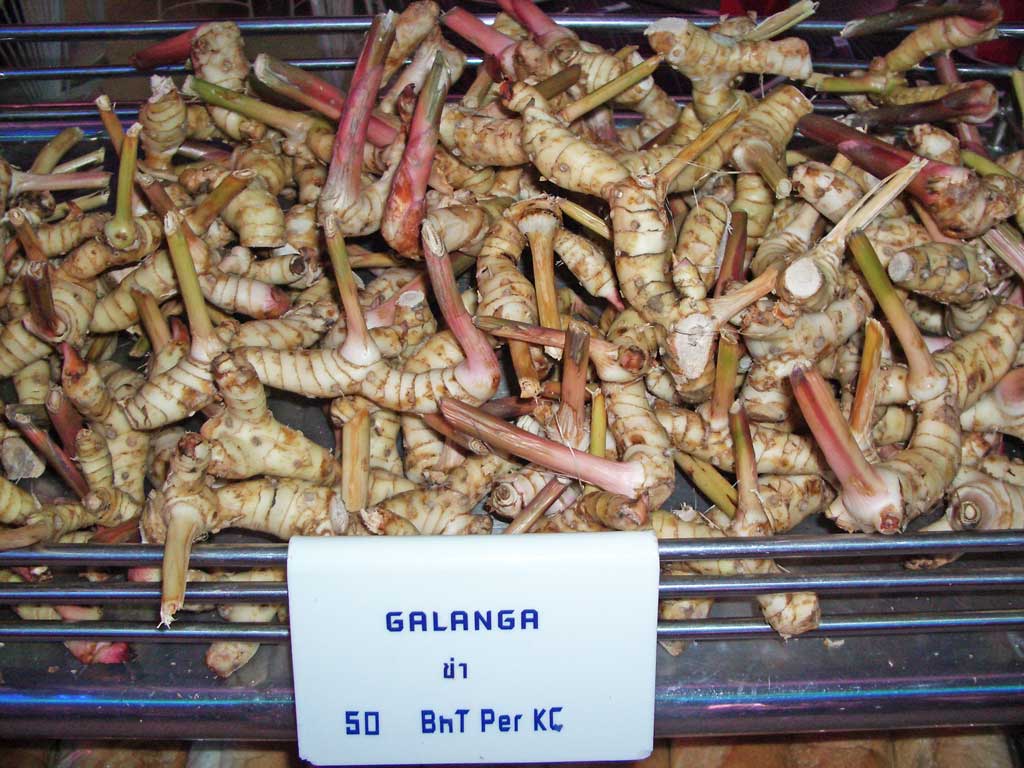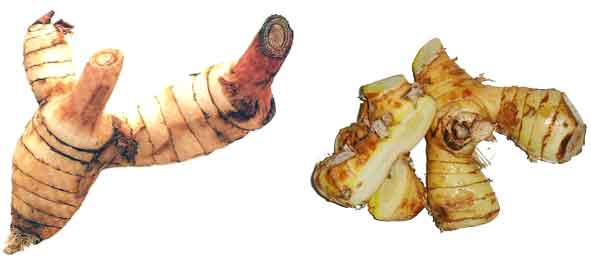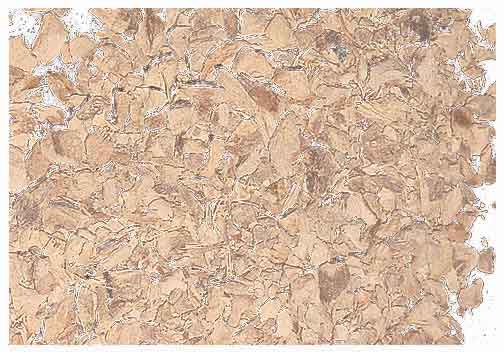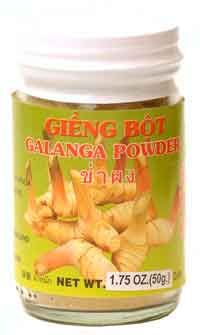 Subscribe to my feed for ingredients
Subscribe to my feed for ingredients  Add to My Yahoo
Add to My Yahoo 
© Copyright 1995-2023, Clay Irving <clay@panix.com>, Manhattan Beach, CA USA
 Subscribe to my feed for ingredients
Subscribe to my feed for ingredients  Add to My Yahoo
Add to My Yahoo
Galangal Characteristics
Pronounced: guh-LANG-guhl
Galangal is also known as laos ginger, laos root, Thai ginger, Siamese ginger, China root, India root, East India Catarrh root, lesser Galangal, Rhizoma Galangae, gargaut, colic root, lengkaus (in Malaysa) and kaempferia galanga. The name Galangal is derived from the Arabic Khalanjan, perhaps a perversion of a Chinese word meaning 'mild ginger.'
Only to root of the plant is used in cooking, similar to ginger. Galangal is used extensively in Thai cuisine. In Thailand, galangal is called "kah".
Fresh galanga has an ivory or very pale yellow color and its growing tips are tinged pink, much like young ginger. Denser, firmer and even more knobby than common ginger, the rhizome is also rounder, marked with concentric rings every half inch apart and has no skin to be peeled.
Tasting nothing like ginger, its hotter and sharper bite combines with a tangy spicy citrus flavor with pine notes which, to some people, is reminiscent of hot mustard.
When buying fresh galangal, select a young rhizome that is as light in color as possible with pinkish shoots and few or no brown spots. Avoid large, fat roots, as these can be very hard and woody, making it almost impossible to cut. Sometimes a piece you get will be tender at the tips and woody further down; save the tender end for salads and use the more fibrous section for seafood soups.
To use, peel and thinly slice or chop. The whole root will keep for up to 2 weeks if wrapped in paper and kept in the vegetable drawer in the refrigerator. Alternatively, the root may be frozen. If you are using frozen galangal, allow it to defrost just enough to be able to cut off the amount required.
If you are not able to find fresh galanga, frozen roots imported from Thailand are available in most Southeast Asian markets. These roots may have an orangish brown color, because they are a slightly different variety, but they are the next best thing to fresh. For pounded chilli and curry pastes, the frozen roots grown in the tropics give a fuller range of flavors than the fresh ones grown in temperate zones.
Galangal is also known for its medicinal value -- It is a stimulant and carminative (a substance used to expel gas from the alimentary canal so as to relieve colic). It is especially useful in flatulence, dyspepsia, vomiting and sickness at stomach, being recommended as a remedy for sea-sickness. It tones up the tissues and is sometimes prescribed in fever. Homoeopaths use it as a stimulant.
If you live in a nice and warm place with no frost try grow galangal in your yard. It has beautiful flowers that resemble orchids.
Varieties
There are two types of galangal known as greater galangal and lesser galangal. Greater galangal is preferred and is more likely to be found in the US.
If using dried galangal, use half the quantity called for, and soak the slices in warm water until pliable.
If using powdered galangal, use approximately 2 to 2.5 teaspoons per ounce of fresh galagal.
 |
 Fresh Galangal. |
 Dried Galangal. |
 Powdered Galangal. |